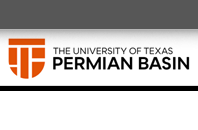
Publications & Presentations
Drag reduction characteristics in straight and coiled tubing — An experimental study
Document Type
Article
Publication Date
9-2006
Abstract
An excessive friction pressure loss due to the small tubing diameter and curvature (which is believed to cause secondary flow) of Coiled Tubing (CT) often limits the maximum obtainable fluid flow rate in most CT operations. Good drag reduction property becomes a desirable quality for drilling, completion and workover fluids for CT applications. Yet, the drag reduction phenomenon in coiled tubing has not been well understood.
This paper presents an experimental study of drag reduction performance of commonly used drag reducing agent, high molecular weight, anionic, AMPS copolymer (Nalco ASP-820) in straight and coiled tubing. The flow loop used consisted of three 1/2-in. OD coiled tubing reels with curvature ratios of 0.01, 0.019, and 0.031. A 1/2-in. OD, 10-ft straight section was also included to compare the drag reduction behavior between straight and coiled tubing. Various concentrations of drag reducing fluid were tested. The optimum concentration was then determined from the results of drag reduction exhibited by the fluid. The differential pressure versus flow rate data were reduced in terms of Fanning friction factor and solvent Reynolds number for estimating drag reduction characteristics.
The results show that the drag reduction in coiled tubing are significantly lower than in straight tubing. As curvature ratio increases, the drag reduction decreases. A new drag reduction envelope (which is parallel to the Virk's envelope for drag reduction in straight pipes) is proposed to evaluate the essential characteristics of drag reduction in coiled tubing. The test data plotted on this new envelope clearly show the delayed onset of drag reduction and the effects of curvature and polymer concentration on drag reduction.
Presently, the correlations for accurately predicting drag reduction characteristics of a commonly used drag reducing fluid in coiled tubing are non-existent. In this study, new drag reduction correlations are developed that can be used for the engineering design of coiled tubing hydraulics. The correlations are also evaluated using the experimental data from full-scale coiled tubing flow experiments and results showed the good agreement with the predictions from the developed correlations.
Recommended Citation
Subhash N. Shah, Ahmed Kamel, Yunxu Zhou, Drag reduction characteristics in straight and coiled tubing — An experimental study, Journal of Petroleum Science and Engineering, Volume 53, Issues 3–4, 2006, Pages 179-188, ISSN 0920-4105, https://doi.org/10.1016/j.petrol.2006.05.004.


Comments
Professor Ahmed Kamel contributed to this work while at the Mewbourne School of Petroleum and Geological Engineering, University of Oklahoma.